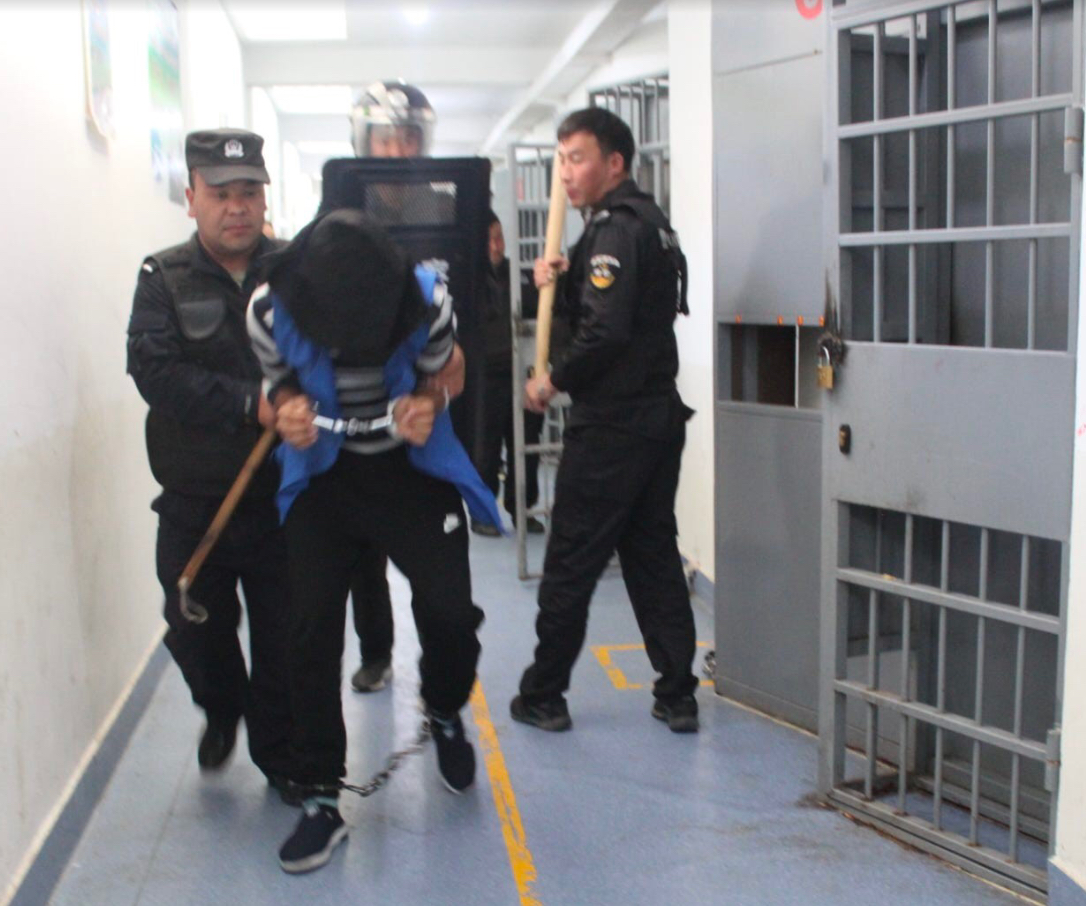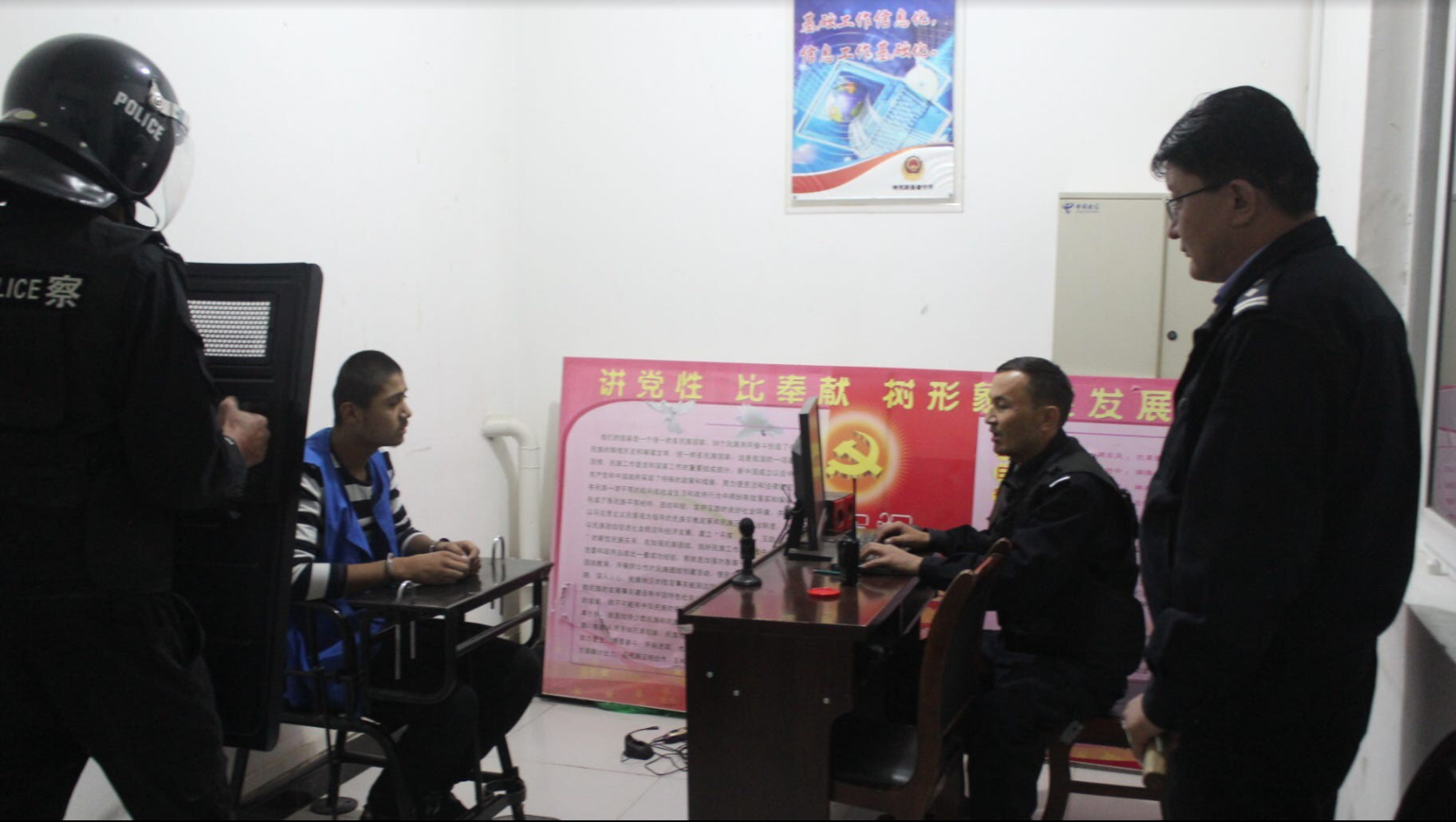
This photo of Nurmemet is one of thousands of pieces of new and unprecedented evidence, obtained by U.S.-based researcher Adrian Zenz, that appears to show the inner workings of China's detention system for interning and indoctrinating the Uyghurs, a Turkic ethnic group in the Xinjiang region of China.
Human rights advocates and experts say Uyghurs are persecuted for supposed “crimes,” such as practicing their faith, growing a beard or, in Nurmemet’s case, "provoking trouble."
Nurmemet’s husband, Abdurahman Hasan, confirmed that the photo is of his wife and told BBC that her only crime was “coming into this world.”
Nurmemet is one of thousands believed to be held in arbitrary detention in hundreds of internment camps across Xinjiang where human rights groups say detainees are subjected to physical, psychological and sexual abuse.
Looking at the photograph of Nurmemet, Hasan said: "You can see how her spirit is broken. It must have been taken around the time of her sentencing. She looks destroyed."
Zenz gave the files to a media consortium that includes USA TODAY and the group verified some elements of the data. The BBC found three Uyghurs who have missing relatives in Xinjiang. Each was able to identify relatives whose names or photos, along with Chinese identification numbers, appear in the files, for a total of six verified entries.
Zenz says he obtained the trove of internal files from a hacker who accessed Chinese police networks in Xinjiang. The data provides an unprecedented glimpse inside Beijing's internment of Uyghurs and other targeted ethnic group.
Zenz says he determined that at least 2,884 of the people in the photos were in detention at the time the photos were taken in 2018. They range in age from 15 to 73.
Zenz says the photos, essentially police mug shots, were taken in police stations or detention centers in 2018. The documents include 5,074 photos in all. A forensic expert analyzed a subset of the photos and found no evidence that they were fake or manipulated.
According to Zenz, the files show the personal data of approximately 286,000 people, almost the entire population of Konasheher County in 2018. The hacked files are from police networks in that county and Tekes County. They indicate that approximately 12% of the county’s ethnic adults were in some form of internment in reeducation, detention or prison facilities.
They indicate that approximately 12 percent of the county’s ethnic adults were in some form of internment in re-education, detention or prison facilities.
The U.S. State Department said in its annual 2021 human rights report that Beijing arbitrarily imprisoned more than 1 million Uyghurs and Muslim minorities in "extrajudicial internment camps" or other forms of detention that severely restricted their liberty.
In addition to the mugshots of the detained, the files appear to contain photographic evidence of items taken from detainees, such as clothing, prayer rugs, beads and other personal items.
The documents, according to Zenz, include transcribed remarks attributed to two high-level Chinese Communist Party officials, one of whom is said to be urging local officials to treat members of targeted ethnic groups as hardened criminals.
In 2017 remarks attributed to Chen Quanguo, who was then charged with implementing the internment campaign in Xinjiang, the speech says when police make arrests, they should put detainees in handcuffs, blindfolds and shackles if needed.

Previous reporting by other outlets indicates that Chinese President Xi Jinping personally urged a hardline approach to unrest among Uyghurs in Xinjiang. In private remarks in 2014, Xi said China was engaged in a massive struggle against “terrorism, infiltration and separatism” and the party should show “absolutely no mercy,” according to a 2019 New York Times story.
Zenz and others say China shuttered some lower-security facilities in Xinjiang, including one in Konasheher County, but expanded higher-security facilities. (China labels the county as Shufu, and Uyghurs refer to it as Konasheher).
There are more than 380 sites in Xinjiang’s detention network, according to research by a nonpartisan think tank in Australia.
One set of materials seen in the new evidence provided to Zenz centers on a detention facility in Tekes County, a portion of Xinjiang roughly 60 miles from the Kazakhstan border.
About 50 of the photos include geolocation data that shows they were taken in Tekes County, according to an analysis by a German outlet that is part of the media consortium.
One image depicts a row of guards in what is said to be part of a detention facility.
The files also show settings such as police stations and police trainings, as well as photos of police officers and the inside of a detention facility in Tekes County.
It is not clear from the photos whether these are security drills or real-life crackdowns inside the facility. Zenz says they are probably drills, used at least in part to intimidate the detainees.
Some images appear to depict the treatment of prisoners, such as someone escorted in handcuffs and shackles.
Guards are also seen with heavy wooden batons and stacking up around a room in riot gear with heavy chains and shackles in hand.
One image shows someone handcuffed to a chair, apparently being questioned.

Other photos appear to show people reciting or singing while wearing uniform vests. In a 2019 interview with the International Consortium of Investigative Journalists, a former detainee named Zumrat Dawut spoke about being forced to recite the camp rules and the Chinese national anthem.
Duwut said “Every day was same...there was a film about Jinping's speech during the meeting and also we had to recite the camp rules, we were asked to learn by heart every day. And also many indoctrination for Uyghurs like, 'religion is a kind of disease from abroad.'"
Xi’s government views Uyghurs as a threat in part because some have sought greater autonomy or a separate state, in certain cases resorting to violence to protest the rule from Beijing. Communist Party officials launched what they called the “Strike Hard Campaign against Violent Terrorism" in 2014, after Uyghur militants orchestrated an attack at a train station that year which left 31 people dead.
Also referred to as East Turkistan, and Uyghurstan, the Xinjiang region is home to most of China's oil and cotton fields, and is a major producer of grains such as wheat, corn and rice. East Turkistan briefly declared independence in 1949, but the movement was swiftly crushed and Xinjiang officially became part of Communist China.
Over the next several decades, many Han Chinese – the country's ethnic majority – migrated to the region, and Mao Zedong launched a large-scale initiative to get Uyghurs to abandon their cultural identity.
The Uyghur birthrate has plummeted recently, according to a recent government census. Experts and advocates on Uyghur issues say that China has pursued a "systematic campaign of forcibly sterilizing Uyghur women of childbearing age and interning Uyghur men of child-bearing years," as outlined in a report by the Newlines Institute.
The Australian Strategic Policy Institute used satellite imagery to determine that around 16,000 mosques in Xinjiang (65% of the total) have been destroyed or damaged as a result of government policies. They say China is systematically erasing the Ughur culture.
In July 2009, a series of protests turned into violent riots in Urumqi, Xinjiang's capital city. The Chinese government launched the Strike Hard Campaign Against Violent Terrorism in May 2014, which aimed to crackdown on extremist groups. Critics say the campaign essentially labeled the entire Uyghur population as extremist.
In December 2014, The New York Times reported that China announced sentencing eight people to death for two separate attacks that Chinese officials called terrorist operations, according to state news media.
Liu Pengyu, a spokesman for the Chinese Embassy in the U.S., said Xinjiang-related issues are “in essence about countering violent terrorism, radicalization and separatism, not about human rights or religion.” He said Xinjiang now enjoys “social stability and harmony,” and “the local people are living a safe, happy and fulfilling life."
Liu said “a large amount of false information has been spread” about China’s policies in Xinjiang, and he included a link to a “fact check” published by an official state press agency. Among other things, that site attacks Zenz’s credibility and says his reports are “full of fabrications and data manipulation.”
The new files show that Nurmemet – then a housewife and mother – was sentenced to 16 years in detention after being flagged by China's sweeping surveillance system and later charged with “gathering a crowd to disrupt the social order” and “picking quarrels and provoking trouble.”
Hasan, Nurmemet’s husband, who left Xinjiang in 2017 and decided it was unsafe to return, said he has not had any contact with his wife in more than five years.
"Since 2018, I’ve been hearing repeatedly that my wife was tortured to death" at the camp where she and his mother had been taken.
Hasan does not know the fate his two children – a son who turns eight this summer and a daughter who is six.
“The Uyghur people,’’ he says, “are in danger of disappearing from this world.”